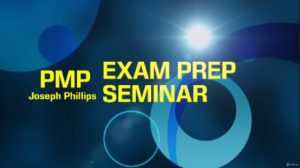Last Updated on May 25, 2025 by andrewshih
Do you need guidance to help you complete the PMP project description?
If so, you have come to the right place and I am here to help you. The project description is the most time-consuming and difficult part of the whole PMP application process.
By following the instructions in this guide, you will avoid the common mistakes of getting the PMP application rejected by PMI. We also include templates, examples, and tips to help you complete the project description quickly and successfully.
- Focus on PMP Application Project Description
- Instruction and Tips From PMI
- Common Mistakes for Failed PMP Application Audit
- PMP Porject Description Tips
- PMP Project Description Checklist
- Review the Application Before Submit
- Next Step – Get Ready for PMP Exam
- Lastly – If You Need More Help.
- Frequently Asked Questions
Disclaimer: PMAspirant is affiliated with PM-Prepcast, Udemy, and other project management training providers. Please review the full affiliate disclaimer.
Focus on PMP Application Project Description
If you are looking for a step-by-step guide to complete each field on the PMP application, please refer to completing the PMP application step-by-step.
This article will focus on the tips and mistakes to avoid in writing a proper PMP project description. Typically, candidates struggle mostly with the PMP project description during the application process.
As a matter of fact, PMP candidates failed the PMI audit process primarily because the PMP project description does not meet what the PMI audit committee is looking for.
Personally, I failed the audit once too, so I understand the struggle that many of you are going through. I assume you are here most likely because either you have failed the audit or you are applying for the first time and looking for guidance.
My goal here is to provide a comprehensive and up-to-date guide to help you complete the PMP project description properly and share my experience and lessons learned from helping other students.
Let’s get started!
Instruction and Tips From PMI
Before you begin the PMP application, you should review the complete checklist and guidelines provided by PMI. I will summarize the key information here.
What is a Project?
First, you must understand what is a project according to PMI.
PMI defines a project as a temporary endeavor undertaken to create a unique product service or result.
A project is different from an operation which is continuous and administrative.
PMP Application Checklist
Here is a quick summary of the checklist provided by PMI.
- Professional Project management experience (i.e. not personal projects).
- List projects individually (i.e. not grouping projects).
- Include the true title and objective of the project.
- Do not include operational responsibilities.
- Accurate representation of the number of team members and budget.
- Able to verify the project if audited.
Demonstrate Project Manager Role
Although you do not need to have a project manager title, you must demonstrate your role as a project manager and satisfy the following criteria.
- Perform duties under general supervision and are responsible for all aspects of the project for the life of the project.
- Lead and direct cross-functional teams to deliver projects within the constraints of schedule, budget, and resources.
- Demonstrate sufficient knowledge and experience to appropriately apply a methodology to projects that have reasonably well-defined project requirements and deliverables.
Project description tips from PMI
Once you understand the definition of a project and what you need to demonstrate, PMI guideline recommends the following format when you write the project description which consists of the following:
- A brief, one-sentence project objective.
- Your role in leading and managing the project.
- Project deliverables summarized by process areas (Initiating, Planning, Executing, Monitoring and Controlling, and Closing)
- A brief, one-sentence project outcome
Common Mistakes for Failed PMP Application Audit
I have helped many students with PMP applications since 2018, and here are the four most common reasons why PMI rejects the application.
Before you start smashing the keyboard and typing up your project description, it is worthwhile to learn about the reasons, the common mistakes the students make, and how to avoid those mistakes.
Mistake #1: Domains are not included
Eligibility Not Met: Domains are not included
Project domains (Initiating, Planning, Executing, Monitoring & Controlling, Closing) and domain-specific deliverables are incomplete; project management methodology used is unclear; without clear project domains we are unable to determine if a project is valid.
In this case, the candidate did not organize the project management methodologies into the 5 project domain groups. As a result, PMI cannot determine if you have the experience leading the project from start to finish covering all the domains.
This is an easy fix. To satisfy this requirement, candidates must clearly outline the five project domains with their specific deliverables and the project management methodologies.
Mistake #2: Projects are not presented individually
Eligibility Not Met: Projects are not presented individually
PMI requires that projects be documented individually, regardless of the number of projects a candidate is documenting.
Some candidates do not have long projects and only have short projects that span a few weeks or months. Other candidates may have projects that are very similar or in distinct phases. Even though each of the projects has a distinct timeline and a unique deliverable, the candidates decided to combine these projects and write them as one project description, which is against PMI guidelines.
Each project must be documented separately, highlighting the project methodologies utilized, the deliverables, and your role in managing it. It is perfectly fine to have similar project descriptions, but you must document each project separately.
Mistake #3: Experience is not a project
Eligibility Not Met: Experience is not a project
The deliverables appear to be job titles/descriptions which do not qualify, they did not indicate that/how you lead & directed all phases of the experience. Using the principles of project management in operational and administrative tasks can be very effective, but does not provide the professional project management experience required for the PMP credential.
In this case, PMI suspects the work experience is considered an operation and not a project. It is important to understand the difference between a project and an operation. If the work experience is indeed an operation, you must exclude it from the application. If the work experience is a project, you will need to modify the wording in your project description.
To fix this issue, you must review and modify your project objective, project domains, and outcome so that the project description shows that work is temporary with a unique product, service, or result as the outcome. Avoid wording that sounds ongoing or administrative. Follow the tips in this article below to craft the project description.
Mistake #4: Project Management Role
Eligibility Not Met: Project Management Role
The deliverables focus mainly on the work experience and not your role leading and directing; they also did not demonstrate sufficient knowledge and experience to appropriately apply a methodology to projects that have reasonably well-defined project requirements and deliverables. Please note, PMI does not require the title of Project Manager but, we do require you to perform the role of project manager for each project.
Sometimes the candidate will write about the project, and what the team did to complete the project, or mostly in a passive tone. The project description is about you and what you did, not what the team did. PMI rejected the application because PMI could not determine that you led the project and had doubts about your role and what you did.
Your project-related experience can still be quality even if you do not have a project manager title, but you must demonstrate that you lead or direct the project. As you describe your role, indicate areas where you are taking a leadership role if you do not have a project manager title. Write the project description using active voice to clearly show that you took the leading role and did the work.
Hopefully, the explanations are helpful and help you to avoid those mistakes. Let me know in the comment below if there are other PMP application rejection reasons that I didn’t cover.
PMP Porject Description Tips
Applying for the PMP certification can be a daunting task, especially when it comes to writing your project descriptions. To help you navigate this process, we’ve compiled ten essential tips to help you complete your project description quickly and easily.
Tip #1: List All Your Major Projects
Failing to plan is planning to fail. Successful PMP application starts with proper planning.
- You should begin by listing the major projects you’ve worked on over the past nine years, starting with the most recently completed project and going backward. Past performance reviews and Project Management Information System (PMIS) can be a good data source for helping you compile the list.
The list should include essential details such as the project name, the company you worked for, and the start and end dates of each project.
Ensure you have accumulated the required years of project management experience as specified by PMI. Remember, overlapping project timeframes should not be double-counted.
Tip #2: Focus on the Longest Project First
- Prioritize your longest projects to minimize the number of descriptions you need to write.
Excel spreadsheet will be handy for this task. Create a timeline with years and months at the top and your projects listed on the left-hand side. This visual aid will help you identify the duration and any overlapping of the projects.

Start with the longest project first! Ignore the short projects unless you need them to satisfy the work experience requirement.
The Excel project timeline template is available for free download if you find it helpful. You can modify the spreadsheet based on personal needs.
Keep in mind that your PMP application is not a resume, so it’s perfectly fine to have gaps in your project timeline.
Tip #3: Notify Your Contacts Before You Write About the Projects
- Before you write about the project in your application, I highly recommend you notify your contacts who can verify the project. This step is crucial if your application is selected for an audit.
Confirm that their contact information is still valid and that they are reachable. This courtesy ensures that your contacts are not caught off guard.
Tip #4: Review Tips and Recommended Format Provided by PMI
- PMI provides valuable resources such as the PMP application checklist and guidelines, which I summarized above. Make use of PMI resources to understand what PMI expects in your project descriptions.
Again, PMI looks for a
- Brief one-sentence project objective
- Your role
- Methodologies categorized by domain groups (initiating, planning, executing, monitoring and controlling, and closing),
- A concise outcome statement.
Tip #5: Project Objective Must Sound Like a Project and Not an Operation
- Ensure your project objectives clearly indicate that you are describing a project, not ongoing operations.
Projects should be time-bound with a unique deliverable upon completion. Avoid objectives that seem continuous and administrative.
For example, an operational-sounding objective might be: “Maintain and update the company’s CRM system.” This objective sounds like an ongoing task without a clear endpoint.
To rewrite this as a project, you could say: “Implement a new CRM system to replace the existing one, including data migration, staff training, and system integration, to be completed within six months.” This clearly defines a unique deliverable and a specific timeframe.
Related: Project vs Operation
Tip #6: Your Project Role Should Be Leading and/or Managing the Project
- Your role must demonstrate that you led or managed the project.
The project role can be as straightforward as indicating that you are the project manager. However, you should briefly describe your leadership or management role if your job title is not a project manager.
It is possible that you led or managed a portion of the overall project or program. If so, indicate this accordingly. For example, you could be a technical lead or manage the procurement aspect or project risk for the duration of the project.
Tip #7: Write Project Descriptions in Active Voice
- Use active voice to write the project description for all five domain groups (initiating, planning, executing, monitoring & controlling, and closing).
Active voice makes it clear that you did the work, while passive voice can make it unclear who performed the actions.
For instance, instead of saying, “Business case and approval were confirmed by the sponsor,” say, “I confirmed the business case and received approval from the sponsor.”
The active form makes it clear that you were responsible for the task. While not every sentence must be in active voice, too many passive voice statements can make the PMI audit committee doubt your involvement.
Tip #8: Get Inspiration from Real PMP Project Description Examples
- Learn from successful project description examples.
One common question is, “Can I see a real PMP project description example?”
Here is one example provided by Andrés.
PMP Project Description Sample
Project objective: Audit the *company network* in the Caribbean and Latin America by validating performance, capacity and vulnerabilities, among the customer network with *my company* infrastructure: *Described the platforms involved in the audit*. Support sales department to determine Services offer to operate *company network* according to the results obtained.
Initiating: Performed project assessment. Identified deliverables and milestones. Several meetings were held to identify key stakeholders. Identified and validated the project interdependencies. Documented high-level risks, assumptions and constraints. Developed the project charter and obtained sponsor approval.
Planning: Assessed detailed project requirements, constraints, and assumptions with stakeholders. Collected requirements and defined scope. Planned the scope of the project while considering time, cost and quality. Created the work breakdown structure, decomposed and sequenced activities, and developed the project schedule. Estimated budget. Defined roles and responsibilities of the project team members to create the resources management plan. Identified project team members and defined roles and their responsibilities to create a project organization structure to develop the communication management plan. Conducted kick-off meeting where communicated the start of the project and the key milestones.
Executing: Obtained and managed project resources. Managed, motivated and led the team through execution. Held weekly project teams and key stakeholder meetings. Audited quality. Kept informed stakeholders managing the flow of information.
Monitoring and Controlling: Monitored project progress and communicating project status to stakeholders. Ensured project deliverables conformed to project scope and quality plan. Monitored and assessed the risk of deliverables. Reviewed the issue log.
Closing: Obtained relevant stakeholder’s acceptance. Obtained administrative closure. Created and shared the final project report signed by the sponsor as per the communications management plan. Documented lessons learned and conducted a project review to update the organization’s knowledge base. Archived final project documents.
Outcomes: Network Audit successfully executed. Results presentation at *company network* headquarters office.
Many PMP aspirants like Andrés have generously shared their samples in the comment section. For your convenience, I have extracted a collection of 14 PMP project description examples from various industries for more inspiration.
Feel free to review these examples for inspiration, but do not plagiarize!
Tip #9: Use Our Project Description Template
- If you still have writer’s block and are unsure where to begin, check out our project description template. Use the template the draft your project description.
It is a reference that contains project methodologies organized into all five domain groups.
Think of it as ordering food from a menu. Pick out the tasks and methodologies you applied during the project for each domain. You can also include a few inputs, tools & techniques, and outputs (ITTO) that you utilized in the project and sprinkle them into your project description.
Tip #10: Use AI to Help You Draft the Project Description
- Use AI to draft the project description by providing the outline you created above.
If you followed the previous tip and gathered a list of project methodologies for each domain group, you should have an outline like this:
Initiating:
[my initiating tasks, methodologies, ITTO]
Planning:
[my planning tasks, methodologies, ITTO]
Executing:
[my executing tasks, methodologies, ITTO]
Monitoring and Controlling:
[my monitoring and controlling tasks, methodologies, ITTO]
Closing:
[my closing tasks, methodologies, ITTO]
AI Prompt:
You can use AI tools such as ChatGPT or Copilit to help you draft the project description. Here is a sample prompt you can use:
I worked on [PROJECT TITLE] and the project objective was [OBJECTIVE]. The role I served in the project was [ROLE].
Please help me write a PMP project description in first person tone, using active voice, in about 400 words for 5 domain groups (initiating, planning, executing, monitoring & controlling, and closing), and using the outline below:
[cut and paste the outline that you created from the exercise above]
Important Notes: AI tools are only to assist, and do not replace you performing due diligence. You must review and ensure the project description is accurate and make necessary corrections.
Now, you can put your objective, role, five domain groups, and outcome together for a complete project description.
If you find these tips helpful by saving you hours of work and are willing to contribute to my coffee fund, here is my coffee fund button:
PMP Project Description Checklist
As you finish writing the project description, here is a checklist and questions to ask yourself:
- Is the objective clear and sounds like a project (as opposed to an operation)?
- Does your role indicate that you lead or manage the project?
- Does the writing demonstrate that you did the work?
- Is the information well organized within the domains and easy to follow?
- Is the project description focused on project tasks, tools, and methodologies and does not describe the project excessively with industry jargon?
- Is a brief project outcome provided?
If you answer YES to all the questions above, you have done a good job with your project description.
Review the Application Before Submit
Completing the PMP application is a time-consuming process, and most likely you probably cannot wait to submit it.
However, you should review your application entirely before you do so. This step is even more important if you have multiple similar projects. Transferring project descriptions from a Word editor to a PMI online application can be another source of error.
Make sure you do not make cut & paste errors such as:
- Incomplete transfer of project description
- Copy the project description matching to the wrong project title.
- Duplicate copies of project objectives when you have multiple similar projects.
There is a link where you can access your complete application before you click the submit button. Once you submit and you identify a critical error, the only thing the audit team can do is reject your application, and you will have to complete the whole application again.
Next Step – Get Ready for PMP Exam
Once you submit the application, it will take 5 to 7 days for PMI to review and provide the status via email and online portal.
While you wait, it’s time to ramp up your preparation for the PMP exam.
Bookmark my PMP resource page for your PMP exam preparation. It includes comprehensive list of top courses, exam simulators, and free resources and videos that are recommended by PMP aspirants. And course, the free PMP exam questions too.
If you are looking for a PMP study plan complete with tips and activities, please refer to PMP exam prep. If you are ready to jump-start and prepare for the PMP Exam, check out the top 9 PMP study tips.
Udemy – The most affordable PMP On-Demand Course
Udemy PMP exam prep course is the most cost-effective on-demand learning that satisfies the 35 contact hour requirement and helps you prepare for the PMP exam. Here are two of the most popular Udemy courses.
PMP Certification Exam Prep by Andrew Ramdayal
Price: 129.99 $14.99

Andrew Ramdayal’s PMP course has emerged as the favorite Udemy course amongst PMP aspirants.
- The students find the “project manager mindset” section very helpful for learning to pick the right choice on the exam
- Engaging training style and easy to understand.
- The course also included 400 exam-like questions.
PMP Exam Prep Seminar by Joseph Phillips
PRICE: 149.99* $15.99

Joseph Phillips Exam Prep course is highly recommended among PMP aspirants. The instructor is knowledgeable and the course is well organized.
NOTE: * Udemy offers discounts very often and has frequent price fluctuations. Please check Udemy for the latest price.
PMP Boot Camp Online Training
If you prefer live classroom or virtual training with support from the instructor, you may want to look into the PMP boot camp courses. In this article, you can find a side-by-side comparison of PMTraining, Knowledgehut, Velociteach, and Project Management Academy PMP boot camp online courses.
Lastly – If You Need More Help.
If you are still stuck or want me to review your project description or have specific questions, you can reach out to me with your project description. Please use the contact form.
If you have a general question related to PMP application that may benefit other PMP aspirants, feel free to comment below. Good luck!
Frequently Asked Questions
I recognize the comment section below is becoming too long to go through, so I have collected the most commonly asked questions by the PMP aspirants.
My projects are all very similar. Can the project descriptions be the same? Will it be negatively received by PMI audit?
PMI will not reject your PMP application because all your projects and project descriptions are similar. However, I would suggest at least varying the objective to make the project unique. For example, by including the name of different stakeholders, clients, or products. You can also easily include different tools & techniques for different projects.
How many words should I write for each project description?
PMI’s recommendation is between 250 to 500 words for each of your PMP project descriptions. As a rule of thumb, 300 to 350 words will be more than satisfactory.
If you still see a recommendation or limitation of 500 or 500 characters (not words), it is outdated information that was applicable before 2021.
Do I have to write the project descriptions using domain groups?
I recommend using the domain groups in your project description for a number of reasons: (1) It’s recommended by PMI. (2) If you don’t do it, you increase your likelihood of getting your PMP application rejected. (3) It makes it easier for the audit committee to review your application if it is audited.
Should I write the project description using 5 domain groups (IN, PL, EX, MC, CL) or 3 domain groups (people, process, business environment) in the project description?
It’s up to you. You can write your project descriptions using either approach. As far as I know, both 3 and 5 domain groups are acceptable, so you can just pick whichever one you prefer.
If the projects are very similar (with similar objectives and outcomes), can I wrap up the projects and write one project description instead of writing multiple project descriptions?
PMI’s definition’s project is a temporary endeavor to create a unique product, service, or result. If they are different projects, you should write a description for each. Writing many project descriptions can sound tedious (and it is), but you can copy and paste to create more project descriptions quickly and simply make small adjustments for those similar projects.
Are too many projects a problem? What about the length of a project? I have projects which span across half a year sometimes and also projects which last only 1 month.
All of the above is fine, and no issues.
You can have as many projects as you want, as long and as short as you want. Obviously, to save you time, I would recommend writing project descriptions with the longest duration until you fulfill the minimum 3-year or 5-year requirement depending on your educational background.
It’s perfectly fine to have gaps, leave out the smaller projects, and omit the overlapping projects; this is not a resume/cv. It is not a problem to have gaps if this is your concern.
Does the project experience have to be acquired via employment? For example, can I use experience such as volunteer work, building my website, or even building a deck for my home?
According to PMP Handbook (under PMP Application and Payment section), “The experience does not necessarily have to be paid work, but it does need to be in a professional setting. Activities such as school projects or planning personal events would not qualify.”
Can we mention one person’s name for all my projects in primary contact for work experience?
Yes, as long as the person is familiar with all your projects. In the case of an audit, the person will need to verify and sign your PMP application.
I do not have a Project Management title, will that impact my chance of getting my PMP application accepted?
While you need to have project management experience, you do not need to have a project management title. When I applied for my PMP, none of my titles was project manager-related. I had titles like infrastructure manager and solution consultant.
As long as you can document the project methodologies and your reviewer will acknowledge and approve your work (in case of an audit), you will be fine. Also, refer to PMP without Project Management title.
Can I use industry jargon related to my niche field? Or should I keep a balance?
Keep in mind that the purpose of writing the project description is not for PMI to understand your projects; the purpose is to demonstrate that you leveraged project methodologies to complete your project.
PMI is looking for project methodologies that you utilized in the project. it is okay if the jargon is related to project methodologies. However, you should avoid jargon only known in your industry or company.



